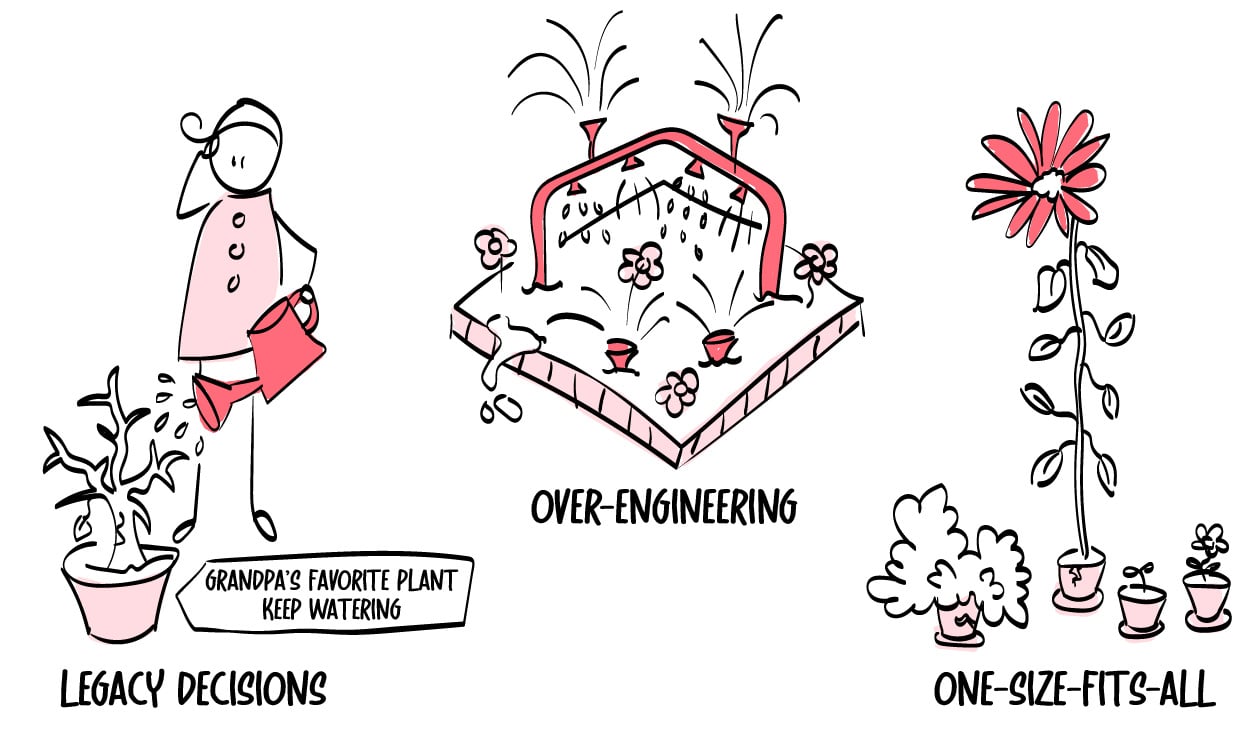
A weekly newsletter exploring the intersection of creative operations, technology, and online retail.
#015: The Rules No One Questions: The Hidden Cost of Extra Processing
A few years ago, I visited a studio working with a well-known retailer. Their production workflow was complex partly because of a set of rules governing how outfits could be styled on set.
These rules dictated which brands could be paired and which combinations were off-limits. Stylists had to work within these constraints, with the system automatically flagging any violations.
At first glance, it seemed logical—ensuring brand consistency and avoiding conflicts. But something about it felt… outdated. So, I asked a simple question: Do these rules still apply?
No one in the studio knew.
These rules had been in place for years, built into the system, embedded in their processes. After a quick conversation with the retailer, the answer became clear:
The rules were obsolete. The client no longer required them, yet they had been shaping the studio’s production for years.
This isn’t an isolated case. In fact, it’s one of the most common types of waste I see in studios.
And it often goes unnoticed.
The Hidden Cost of Extra Processing
Since starting Content Insider, I’ve written about two major types of studio waste: complexity and rejections.
Today, we need to discuss the third: extra processing—anything that doesn’t add value to the final result.
(Imagine a customer is paying for every single step in your workflow. Would they be willing to cover the cost of this? If not, it’s probably extra processing.)
Extra processing happens when studios follow outdated workflows, apply unnecessary steps, or enforce rules that no longer serve a purpose.
And just like that studio's styling restrictions, these inefficiencies aren’t questioned until someone actively challenges them.
Where does extra processing come from?
- Legacy Decisions. Rules and workflows created years ago that no one remembers the reason for.
- Over-Engineering. Workflow steps designed for extreme precision that add no value in most cases.
- One-Size-Fits-All Processes. Treating every job, asset, product, or scenario the same instead of adapting workflows to what’s actually needed.

A classic example is color correction. Many e-commerce studios inherited print production workflows where calibrated color accuracy was critical. But online, every screen renders color differently.
Absolute precision is not possible. Yet, some studios still apply color correction to every asset, even when 99% of them will only be viewed on uncalibrated screens.
Other studios insist on running RAW workflows for assets destined for online use, over-processing data capture, or adding unnecessary quality control steps. Each of these adds cost and time but rarely improves the final output in a way that matters.
The Most Valuable Question in Workflow Optimization
One of the most high-impact ways to improve a studio isn’t by investing in new technology or hiring more people but by asking a simple question:
Why do we do it this way?
Not every process needs automation. Some just need to go. So, here’s my challenge: Pick one part of your studio’s workflow and ask, Does this step still add value? If you don’t have a clear answer—or if the answer is because we’ve always done it that way—take it further.
Toyota’s Five Whys technique can help uncover the root cause of inefficiencies. Ask why. Then, ask again—five times. Each answer will bring you closer to the truth. Oftentimes, you find a step that once made sense but no longer does (or one that exists purely out of habit).
Sometimes, the sharpest way to improve your workflow isn’t by adding.
It’s by removing what no longer serves you.

|
Thomas Kragelund Follow me on LinkedIn. |
Get Content Insider In Your Inbox.
The weekly newsletter packed with actionable tips, industry trends, and insider insights from Creative Force CEO Thomas Kragelund. Stay ahead in creative production and online retail—subscribe now to gain the insights you need to drive growth and stay competitive.



